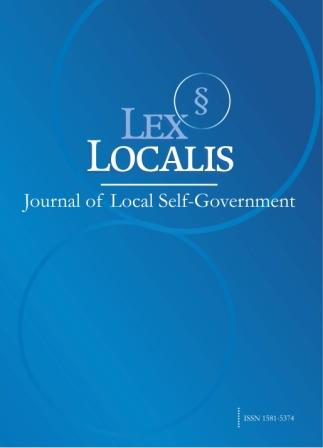Public Health Policy Approaches to Enhancing Children’s Visual Acuity: Evaluating the Role of Physical Intervention Programs
DOI:
https://doi.org/10.52152/2893Ključne besede:
eyeglasses, uncorrected distance visual acuity, kinetic visual acuity, accommodative facility, myopia prevention and control, school health program.Povzetek
Purpose: To investigate the effect of wearing eyeglasses in physical education classes on uncorrected distance visual acuity (UDVA), kinetic visual acuity (KVA), and accommodative facility.
Method: Participants were 54 fifth graders (10–11 years) with prescription lenses in China. One group wore their lenses in class while the other removed their lenses. Intervention took place over 15 weeks, three times per week. UDVA, KVA, and accommodation ability were measured before and after intervention.
Results: The UDVA, KVA, and accommodation ability of both groups significantly improved from pre- to post-test (p < 0.01). UDVA and KVA difference between the groups was not significant, but the accommodative facility of the non-lens-wearing group was significantly higher than in lens wearers (p < 0.01).
Conclusion: Physical education to enhance ciliary muscle function positively affects UDVA and KVA, and accommodative facility is especially enhanced for those not wearing glasses and with severe visual impairment.
Literatura
Burton MJ, Ramke J, Marques AP, et al. The Lancet global health Commission on global eye health: Vision beyond 2020. Lancet Glob Heal. 2021;9(4):e489–e551. doi:10.1016/S2214-109X(20)30488-5
Li L. National Vision Health Report. Beijing University Press; 2016.
Baird PN, Saw S-M, Lanca C, et al. Myopia. Nat Rev Dis Prim. 2020/12/17 2020;6(1):99. doi:10.1038/s41572-020-00231-4
Mayinuer Y, Wang NL. [Vision 2020: The progress of blindness prevention and eye health in China]. Chin Med J. Dec 29 2020;100(48):3831–3834. doi:10.3760/cma.j.cn112137-20200825-02468
Chen S, Guo Y, Han X, et al. Axial growth driven by physical development and myopia among children: a two year cohort study. J Clin Med. Jun 23 2022;11(13):3642. doi:10.3390/jcm11133642
Hu DN, Chu RY, Lv F, Qu J. Myopia. People's Health Publishing House; 2009.
Bo M. Shintai Hottatsu No Shinrigaku. Fumaido Publishing; 1984.
Jin G, Chen J, Chen G, et al. Effects of three ball sports on dynamic visual acuity in lower grade elementary school students. Chinese J Rehabil Theory Pract. 2019;(11):1279–1282.
Quevedo-Junyent L, Aznar-Casanova JA, Merindano-Encina D, Cardona G, Solé-Fortó J. Comparison of dynamic visual acuity between water polo players and sedentary students. Res Q Exerc Sport. 2011/12/01 2011;82(4):644–651. doi:10.1080/02701367.2011.10599801
Wagner S, Schaeffel F, Zrenner E, Straßer T. Prolonged nearwork affects the ciliary muscle morphology. Exp Eye Res. 2019/09/01/ 2019;186:107741. doi:10.1016/j.exer.2019.107741
Zhang M, Qiu ZY, Cai G, et al. Policy framework and core content of the World Health Organization and UNESCO health-promoting schools. Chinese J Rehabil Theory Pract. 2022;(1):111–118.
Ji L. Interpretation of China's "Compulsory education physical education and health curriculum standards (2022 edition)". Sport Sci. 2022;(5):3–17, 67. doi:10.16469/j.css.202205001
National Health Commission. "Guidelines on appropriate technology for prevention and control of myopia in children and adolescents (updated edition)" and its interpretation. Updated October 13. Accessed 22 November, http://www.gov.cn/xinwen/2021-10/13/content_5642345.htm
Zhang M, Fu Q, Zhou S, Tan Q, Cai G. Meta-analysis of sports activities for preventing and controlling myopia in children and adolescents. Sport Sci Res. 2022;(1):55–64+83.
Shi YN, Fang Y. Formation Mechanism, Prediction, And Prevention and Control of Myopia in Chinese Children and Adolescents. Shaanxi Science and Technology Press; 2012.
Das T, Holland P, Ahmed M, Husain L. South-East Asia Eye Health. Springer; 2021.
Angle J, Wissmann D. The epidemiology of myopia. Am J Epidemiol. 1980;111(2):220–228. doi:10.1093/oxfordjournals.aje.a112889
Li S-M, Kang M-T, Wu S-S, et al. Efficacy, safety and acceptability of orthokeratology on slowing axial elongation in myopic children by meta-analysis. Curr Eye Res. 2016/05/03 2016;41(5):600–608. doi:10.3109/02713683.2015.1050743
Vera J, Jiménez R, Cárdenas D, Redondo B, García JA. Visual function, performance, and processing of basketball players vs. sedentary individuals. J Sport Health Sci. Dec 2020;9(6):587–594. doi:10.1016/j.jshs.2017.05.001
Baird PN, Saw SM, Lanca C, et al. Myopia. Nat Rev Dis Primers. Dec 17 2020;6(1):99. doi:10.1038/s41572-020-00231-4
Gwiazda J, Thorn F, Bauer J, Held R. Myopic children show insufficient accommodative response to blur. Invest Ophthalmol Vis Sci. Mar 1993;34(3):690–4.
Phillips JR. Monovision slows juvenile myopia progression unilaterally. Br J Ophthalmol. Sep 2005;89(9):1196–200. doi:10.1136/bjo.2004.064212
Yin RB, Sun L, Wang GX, et al. The influence of sports activities on myopia in adolescents based on the ICF theory. Chinese J Rehabil Theory Pract. 2018;(10):1223–1227.
Zhao WR, Zhao HH, Ma WH, et al. Efficacy observation of ciliary muscle training on early myopia in primary school students. Chinese J Rehabil Med. 2008;(2):153–154.
Fang HY. Observation on the Clinical Effects of Wearing Orthokeratology Lenses and Glasses to Improve Accommodation Function. China Ophthalmology and Vision Science Committee; 2020:176–176.
Cai G. Sports activities and the prevention and control of myopia in children and adolescents. Sport Sci Res. 2022;(3):18.
Wagner S, Zrenner E, Strasser T. Emmetropes and myopes differ little in their accommodation dynamics but strongly in their ciliary muscle morphology. Vision Res. 2019/10/01/ 2019;163:42–51. doi:10.1016/j.visres.2019.08.002
Lu ZS, Zhao XH, Tan L. Vision training: Methods and applications for preventing and controlling low visual acuity in children and adolescents. J Shanghai Univ Sport. 2020;(8):27–32. doi:10.16099/j.sus.2020.08.004
Tang J, Ding M, Yu HX. Observation of the therapeutic effect of accommodative sensitivity training combined with compound tropicamide eye drops in pseudomyopia in adolescents. Med Theory Pract. 2017;(15):2271–2273. doi:10.19381/j.issn.1001-7585.2017.15.050
Zhou S, Chen J, Zhang J, et al. Age and gender differences in visual function of school-age children participating in sports activities. Chinese J Rehabil Theory Pract. 2019;(11):1255–9.
Objavljeno
Številka
Rubrika
Licenca
Avtorske pravice (c) 2025 Lex localis - Journal of Local Self-Government

To delo je licencirano pod Creative Commons Priznanje avtorstva-Nekomercialno-Brez predelav 4.0 mednarodno licenco.








